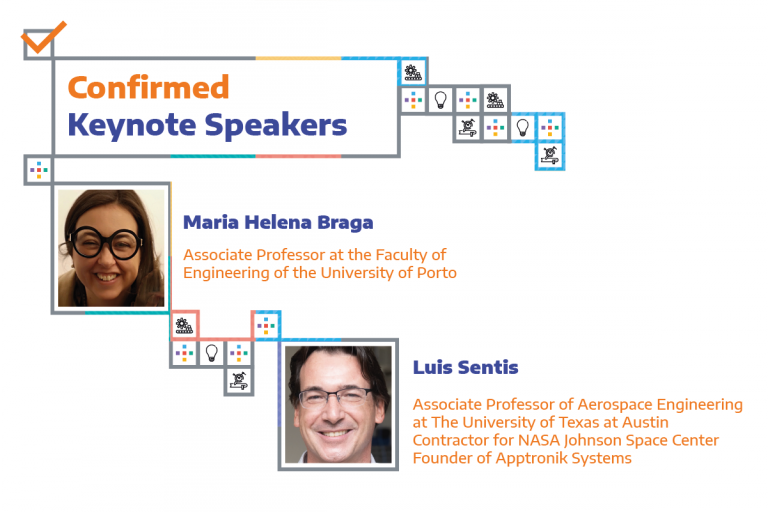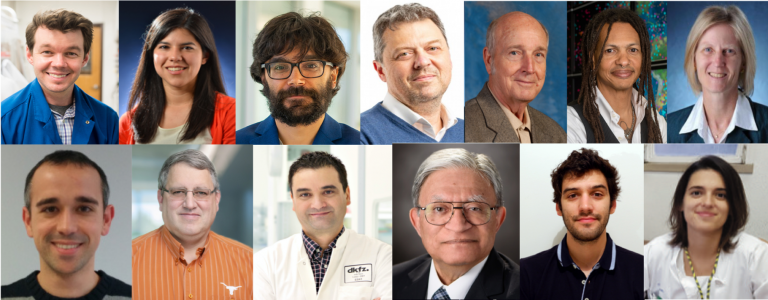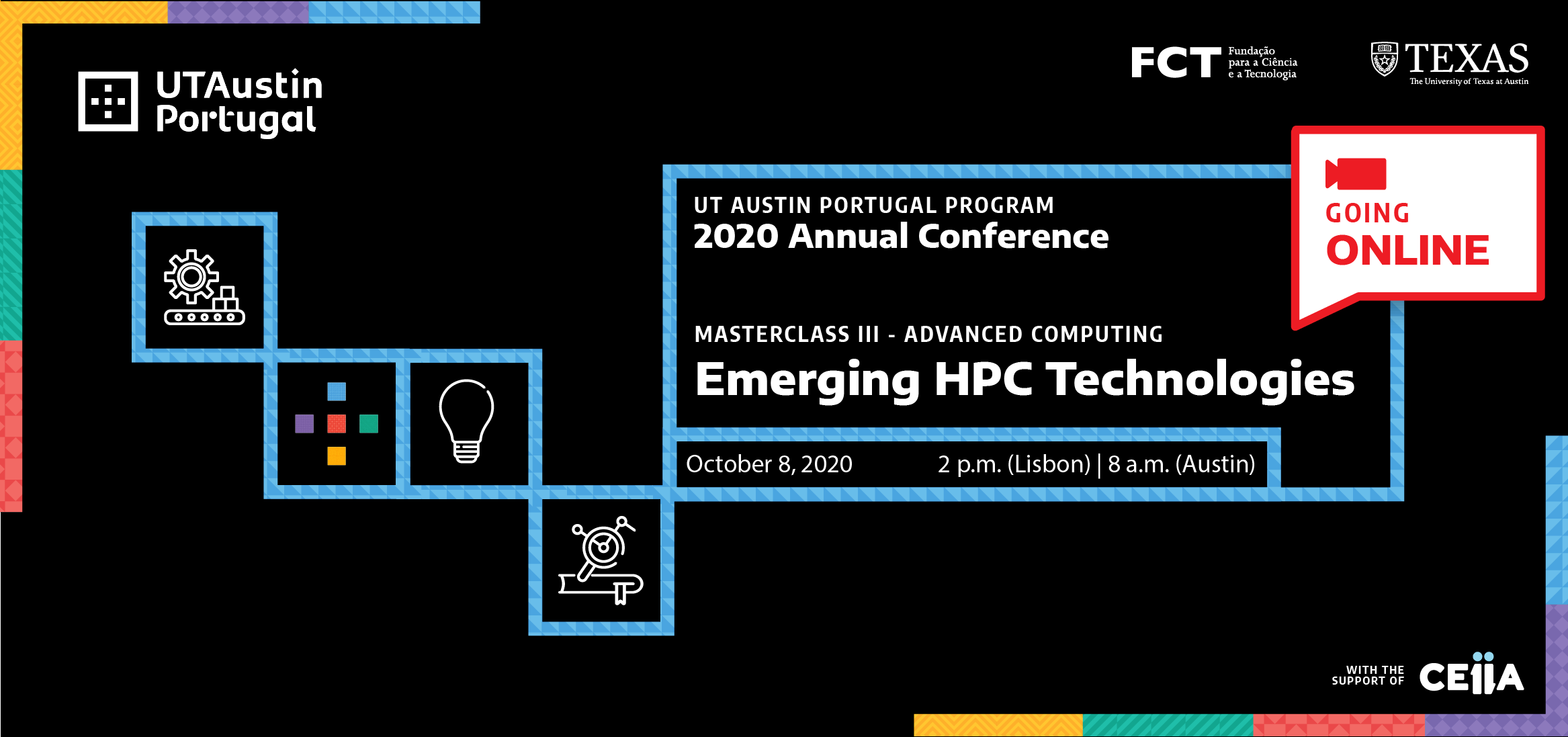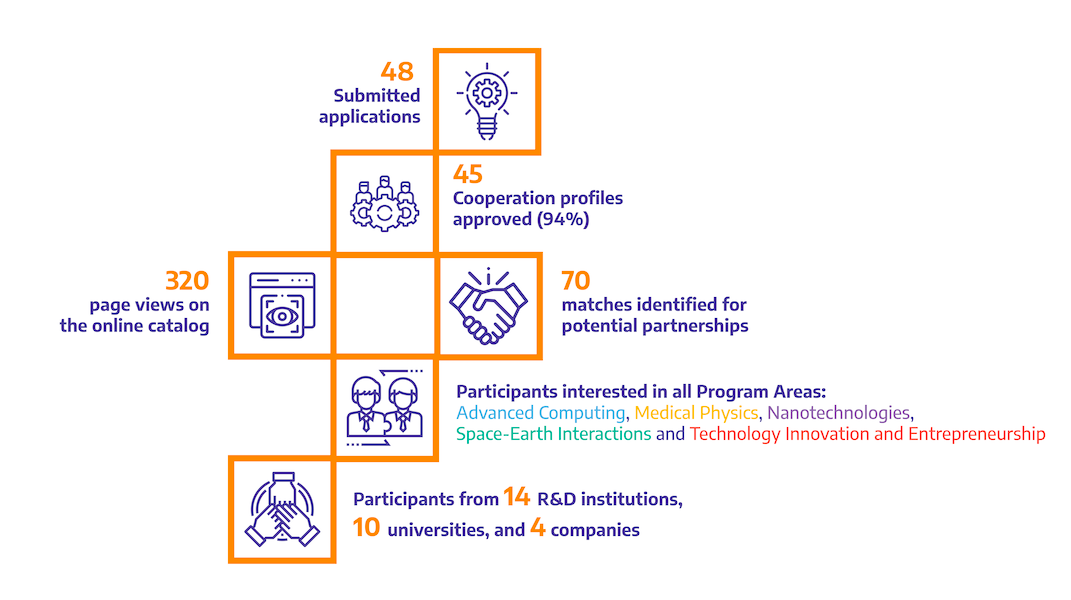UT Austin Portugal 2020 Annual Conference – Innovation at the Intersection of Academia and Industry - UT Austin Portugal (original) (raw)
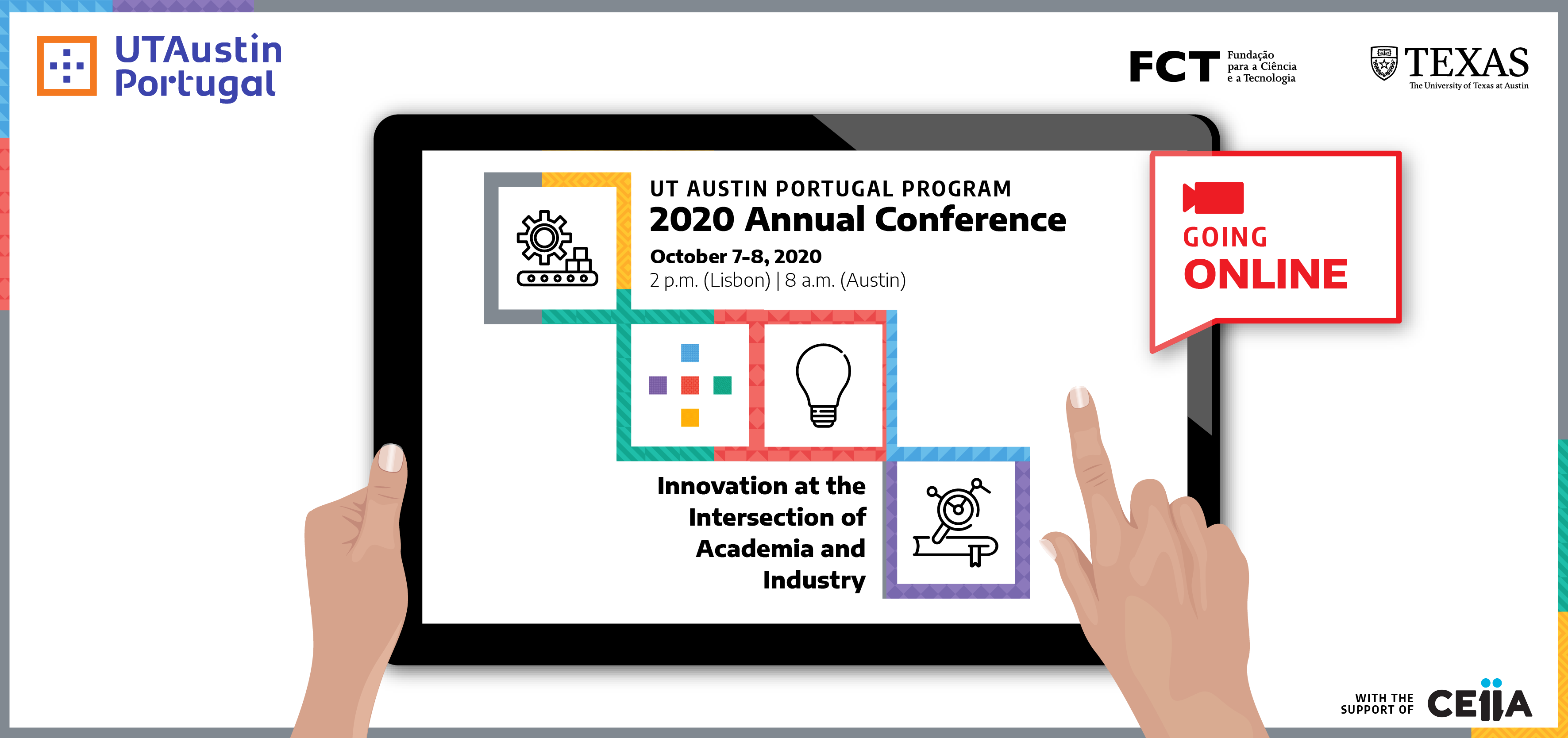
The 2020 UT Austin Portugal’s Annual Conference was focused on Innovation at the Intersection of Academia and Industry. There couldn’t be a better theme to frame the Program’s major networking event: the international partnership supported for the first time ever a batch of highly innovative industry-driven projects led by Portuguese companies in conjunction with non-corporate R&D organizations in Portugal and The University of Texas at Austin (UT Austin).
Taking advantage of different sessions formats and dynamics, the Conference brought to the fore how university-industry collaborations across its scientific areas are shaping solutions for some of our societies’ most pressing challenges. Key findings and lessons learned with the view to further improving the relationship between universities and businesses were also shared.
As a result of the worldwide pandemic, and to ensure both our Portuguese and UT Austin communities could participate in the UT Austin Portugal 2020 Annual Conference, we decided to go fully digital. A panel of top-notch speakers, four highly specialized masterclasses, and a networking corner in a totally new experience!
Keynote Speakers
We brought to you two top-rated speakers, who took you on a captivating journey to show you how bold science is shaping disruptive solutions for some of our societies’ most pressing challenges.
Maria Helena Bragais an Associate Professor and Head of the Engineering Physics Department at Faculty of Engineering of the University of Porto. She has a degree on Solid State Physics and Materials Science and a PhD on Materials and Metallurgy Engineering. From 2008 to 2011, she worked as a Research Scholar and Long-Term Staff Member at Los Alamos National Laboratory, US, where she firstly started working on crystalline solid-state electrolytes. In 2014, she discovered a Li- and Na- based glass-electrolyte that would lead her to work on new energy storage devices and to collaborate with Prof. John B. Goodenough (Nobel Prize in Chemistry 2019) from 2016 to 2019 as a Senior Research Fellow at The University of Texas at Austin. Presently, she collaborates with colleagues across the world and was invited to give more than 30 talks in countries such as Japan, South Korea, Chile, Brazil, Bolivia, US, and Germany, among others. She has more than 55 peered reviewed papers some in high very impact journals, 13 families of patents and more than 130 talks.
Luis Sentis, Associate Professor in the Department of Aerospace Engineering at The University of Texas at Austin and General Dynamics Endowed Faculty Fellow, received his Ph.D. and M.S. degrees in Electrical Engineering from Stanford University where he was also a Postdoctoral Fellow in the Computer Science Department. He was a La Caixa Foundation Fellow while at Stanford. He holds a B.S. degree in Telecommunications and Electronics Engineering from the Polytechnic University of Catalonia. Before Stanford, he worked in Silicon Valley as a Control Systems Engineer. In Austin, he leads the Human Centered Robotics Laboratory, a laboratory focusing on control and experimentation with walking robots and exoskeletons, design of high performance ground systems, and algorithms for active sensing in human environments. He is also a founding member of the UT Robotics Portfolio Program and the UT Robotics Center of Excellence. He was the UT Austin’s Lead for DARPA’s Robotics Challenge with NASA Johnson Space Center, where he helped to design and test the Valkyrie humanoid robot. His research has been funded by NASA, the Office of Naval Research, Army Futures Command, NSF, DARPA, and private companies. He has been awarded the NASA Elite Team Award for his contributions to NASA’s Johnson Space Center Software Robotics and Simulation Division. He is also a founding member and scientific advisor for Apptronik Systems, a company focusing on human-centered robotic products and R&D in human-augmentation exoskeletons and humanoids.
Agenda
October 7, 2020
2 p.m. (Lisbon time) | 8 a.m. (Austin time)
Opening Remarks
Message from the Host and the Program’s Leadership and Sponsor (FCT)
2.20 p.m. | 8.20 a.m.
Keynote Speech I | Maria Helena Braga (FEUP)
_“The future of batteries as we know them today: possible entanglements leading to a transformation_”
3 p.m. | 9 a.m.
Moderated discussion with Keynote Speaker Maria Helena BragaDiscussants: Andrew Murchison (UT Austin) and Paulo Ferreira (INL and IST)
Moderator: Rui Oliveira, National Co-Director of UT Austin Portugal
3.25 p.m. | 9.25 a.m.
Short break
3.40 p.m. | 9.40 a.m.
Keynote Speech II | Luis Sentis (UT Austin)
“Invention and commercialization of human-centered robots through academic-industry collaborations with NASA”
4.20 p.m. | 10.20 a.m.
Moderated discussion with Keynote Speaker Luis SentisDiscussants: Pedro Camanho (FEUP, INEGI and LAETA) and Ricardo Conde (Portugal Space)
Moderator: Rui Oliveira, National Co-Director of UT Austin Portugal
4.45 p.m. | 10.45 a.m.
Innovation at the Intersection of Academia and Industry:
UT Austin Portugal’s elite of industry-driven research projects
4.50 p.m. | 10.50 a.m.
Closing RemarksMessage from Manuel Heitor, Minister of Science, Technology and Higher Education
October 8, 2020
2 p.m. (Lisbon time) | 8 a.m. (Austin time)
Thematic Masterclasses
Thematic and highly-specialized masterclasses remained a central part of our Annual Conference agenda. In this edition, we doubled the number of Masterclasses, covering the following knowledge areas – Advanced Computing, Nanotechnologies, Medical Physics, and Space-Earth Interactions and featuring renowned experts. Framed by the Conference’s underlying theme – Innovation at the Intersection of Academia and Industry – Masterclasses gave participants the chance to find out more about the latest research and innovation trends and interact with world-class experts, peers and potential partners.
Masterclass I: Innovation in Biomimetic Materials (Nanotechnologies)
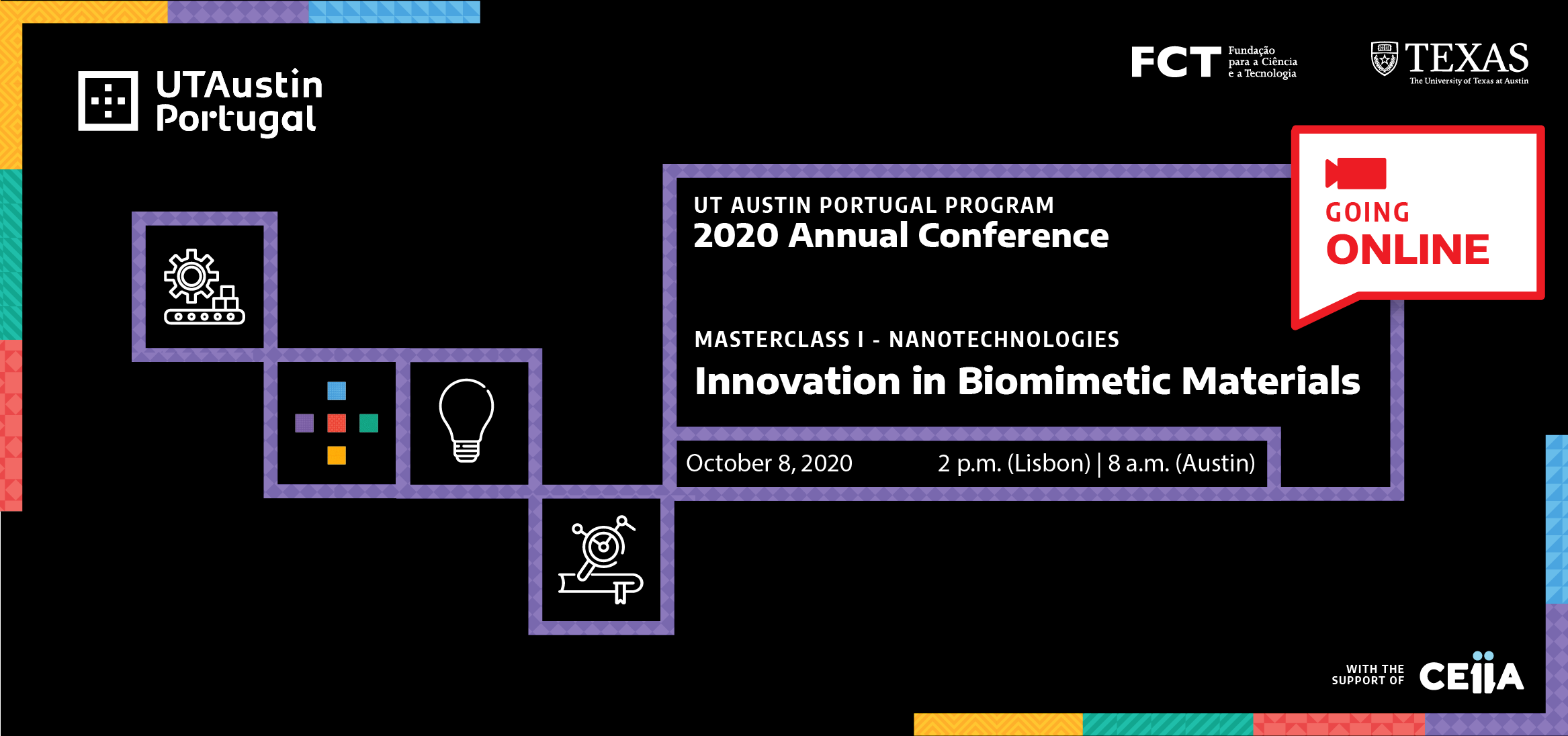
Description
Biomimetic materials are designed to replicate one or more attributes of a material produced by a living organism. Throughout the millennia, nature has evolved to adapt and develop highly sophisticated methods to solve problems. There are numerous examples of functional surfaces, fibrous structures, structural colours, and highly catalytic, self-cleaning, self-healing and thermal insulation materials, among others, which offer important lessons for the materials of the future.
Some of these solutions may have inspired humans to achieve outstanding outcomes. For example, the strength and stiffness of the hexagonal honeycomb may have led to its adoption for use in lightweight structures in airplane and in many other applications.
Biomimetic research is a rapidly growing field having a huge potential for the development of new and sustainable materials that can only be realized through interdisciplinary research rooted in a holistic understanding of nature.
Registration
Registration is now closed.
Speakers
- Keith Keitz, Assistant Professor in the Department of Chemical Engineering, The University of Texas at Austin, USA
- Adrianne Rosales, Assistant Professor in the Department of Chemical Engineering, The University of Texas at Austin, USA
- Martin Lopez-Garcia, Group Leader in the Natural and Artificial Photonic Structures and Devices Laboratory in the Nanophotonics Department, INL, Portugal
- João Mano, Full Professor in the Department of Chemistry, University of Aveiro, Portugal
Scientific Coordination
- Brian Korgel, T. Brockett Hudson Professor of Chemical Engineering at The University of Texas at Austin, USA
- Carla Silva, Director of the Department of Chemistry and Biotechnology at the Technological Centre for the Textile and Clothing Industry of Portugal (CITEVE), Portugal
- Paulo Ferreira, Professor at IST, University of Lisbon, and Head of Department of Advanced Electron Microscopy, Imaging and Spectroscopy at the International Iberian Nanotechnology Laboratory (INL), Portugal
Program
October 8, 2020
2 p.m. (Lisbon time) | 8 a.m. (Austin time)
Welcome Message by Brian Korgel, Program’s Area Director of Nanotechnologies at UT Austin
2.10 p.m. | 8.10 a.m.
_“Controlling Material Properties through Bacterial Extracellular Electron Transfer”_by Keith Keitz + Moderated Q&A
2.50 p.m. | 8.50 p.m.
“Engineering Functional Hydrogels from Biomimetic Polymers”
by Adrianne Rosales + Moderated Q&A
3.30 p.m. | 9.30 a.m. Short break
3.45 p.m. | 9.45 a.m.
_“Light harvesting in nature as inspiration for photonic nanomaterials_” by Martin Lopez-Garcia + Moderated Q&A
4.25 p.m.| 10.25 a.m.
“Bioinspired tools for the development of materials and devices for biomedicine” by João Mano + Moderated Q&A
5.05 p.m. | 11.05 a.m.
Wrap-up by Paulo Ferreira, Program’s Area Director of Nanotechnologies in Portugal
Target Audience
Academia and Industry. The participants are researchers from academia and industry who deal with the development of new products or applications and would like to develop a deeper understanding of biomimetic and biomaterials.
Masterclass II: Platforms for global monitoring – Emerging capabilities and challenges (Space-Earth Interactions)
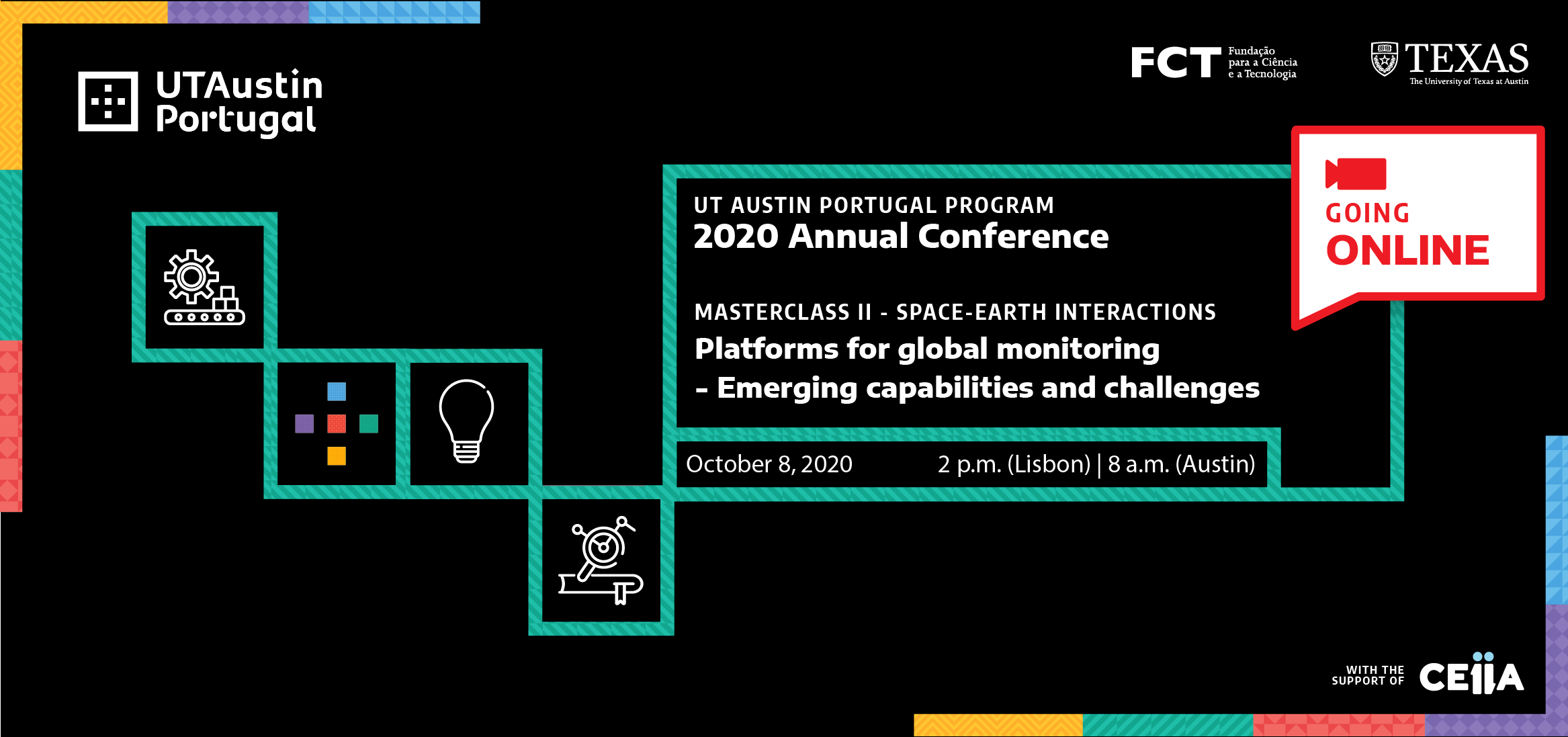
Description
As we enter the third decade of the 21st century, the prospect of miniaturized space platforms and high-precision Earth remote sensing are beginning to unleash their full potential for global Earth observing. Emerging technologies create new opportunities, but also pose new challenges.
In this masterclass, world-renowned experts illuminated the underlying Space-Earth interactions from three different vantage points. Prof. Byron Tapley elucidated the emerging capabilities of miniature satellites and their roles in sustained Earth observations. Taking advantage of high-precision geodesy, Prof. Kristine Larson demonstrated complementary Earth observing capabilities, through unanticipated uses of the Global Positioning Systems as a remote sensing technique to monitor the Earth’s surface. Vastly expanded satellite traffic and underlying space debris are creating an increasingly serious space traffic challenge. Prof. Moriba Jah discussed transdisciplinary solutions tying academia and industry together to address this challenge and to develop the Earth’s orbit sustainably.
Registration
Registration is now closed.
Speakers
- Moriba Jah, Associate Professor in the Department of Aerospace Engineering and Engineering Mechanics, The University of Texas at Austin, USA
- Byron Tapley, Professor Emeritus in the Department of Aerospace Engineering and Engineering Mechanics, The University of Texas at Austin, USA
- Kristine Larson, Professor Emerita, Aerospace Engineering Sciences, University of Colorado Boulder, USA
Scientific Coordination
- Luísa Bastos, Principal Investigator at the Faculty of Sciences of the University of Porto, Portugal
- Patrick Heimbach, Associate Professor in the Department of Geological Sciences at The University of Texas at Austin, USA
- Pedro Camanho, Professor at the Department of Mechanical Engineering of the Faculty of Engineering of University of Porto,Portugal
Program
October 8, 2020
2 p.m. (Lisbon time) | 8 a.m. (Austin time) Welcome Message by Patrick Heimbach, Program’s Area Director of Space-Earth Interactions at UT Austin
2.10 p.m. | 8.10 a.m. “_The space traffic challenge and trans-disciplinary solutions tying academia and industry together_” by Moribah Jah + Moderated Q&A
2.50 p.m. | 8.50 a.m. “_Defining the roles of miniature satellite in observing the Earth_” by Byron Tapley + Moderated Q&A
3.50 p.m. | 9.50 a.m. Short break
4.05 p.m. | 10.05 a.m. “_GPS reflectometry to study the Earth_” by Kristine Larson + Moderated Q&A
5.05 p.m. | 11.05 a.m. Wrap-up by Luísa Bastos, Program’s Area Director of Space-Earth Interactions in Portugal
Target Audience
Academia and Industry interested in Space and Earth Observation studies.
Masterclass III: Emerging HPC Technologies (Advanced Computing)
Description
As pointed out by the European Union, “High-Performance Computing (HPC) is a critical factor for the digitization of industry, its innovation and competitiveness”. By enabling sophisticated modelling and simulation, HPC is a must-have asset that allows modern societies to understand the complexity of massive amounts of data generated by multiple sources, thereby creating valuable knowledge.
The application potential of HPC is huge for a wide range of fields from cybersecurity, to climate change and weather prediction, to personalized medicine, space exploration, energy efficiency or even to ICT research itself.
This increase in demand for HPC technologies calls for an ever increasing capacity and efficiency with strong implications on the many emerging and thriving technologies being made available nowadays.
Organised by the Area of Advanced Computing, and counting on world-class experts from ARM and TACC, this Masterclass addressed the HPC capabilities and related opportunities in two ways:
- first, by exploring the topic of high-performance large-scale processors and systems in general, and specific on Arm in HPC, supported by examples of relevant academia-industry partnerships and EU-funded projects;
- second, by focusing on the next generation of HPC technologies, applications and systems towards exascale architectures and how they are redesigning scientific research.
Registration
Registration is now closed.
Speakers
- Alejandro Rico, Principal Research Engineer at ARM, USA
- Dan Stanzione, Associate Vice President for Research and Executive Director at the Texas Advanced Computing Center (TACC), USA
Scientific Coordination
- Dan Stanzione, Associate Vice President for Research and Executive Director at TACC, USA
- Rui Oliveira, Associate Professor at the Informatics Department of the University of Minho, Member of the Board of Directors at INESC TEC, Director of Minho Advanced Computing Center, Portugal
Moderation
- Pedro Alberto, Associate Professor at University of Coimbra
Program
October 8, 2020
2 p.m. (Lisbon time) | 8 a.m. (Austin time)
Welcome Message by Pedro Alberto (University of Coimbra)
2.10 p.m. | 8.10 a.m.
“_ARM in HPC: from toy clusters to fastest supercomputer in the world_”
by Alejandro Rico + Moderated Q&A
3.40 p.m. | 9.40 a.m.
Short break
3.55 p.m.| 9.55 a.m.
Presentation II by Dan Stanzione + Moderated Q&A
5.25 p.m.| 11.25 a.m.
Wrap-up by Pedro Alberto (University of Coimbra)
Target Audience
HPC users/enthusiasts and potentially interested people in the next generational advanced computing technologies.
Masterclass IV: The Challenges of Proton Therapy in Cancer Treatment – Research and Clinical Perspectives (Medical Physics)
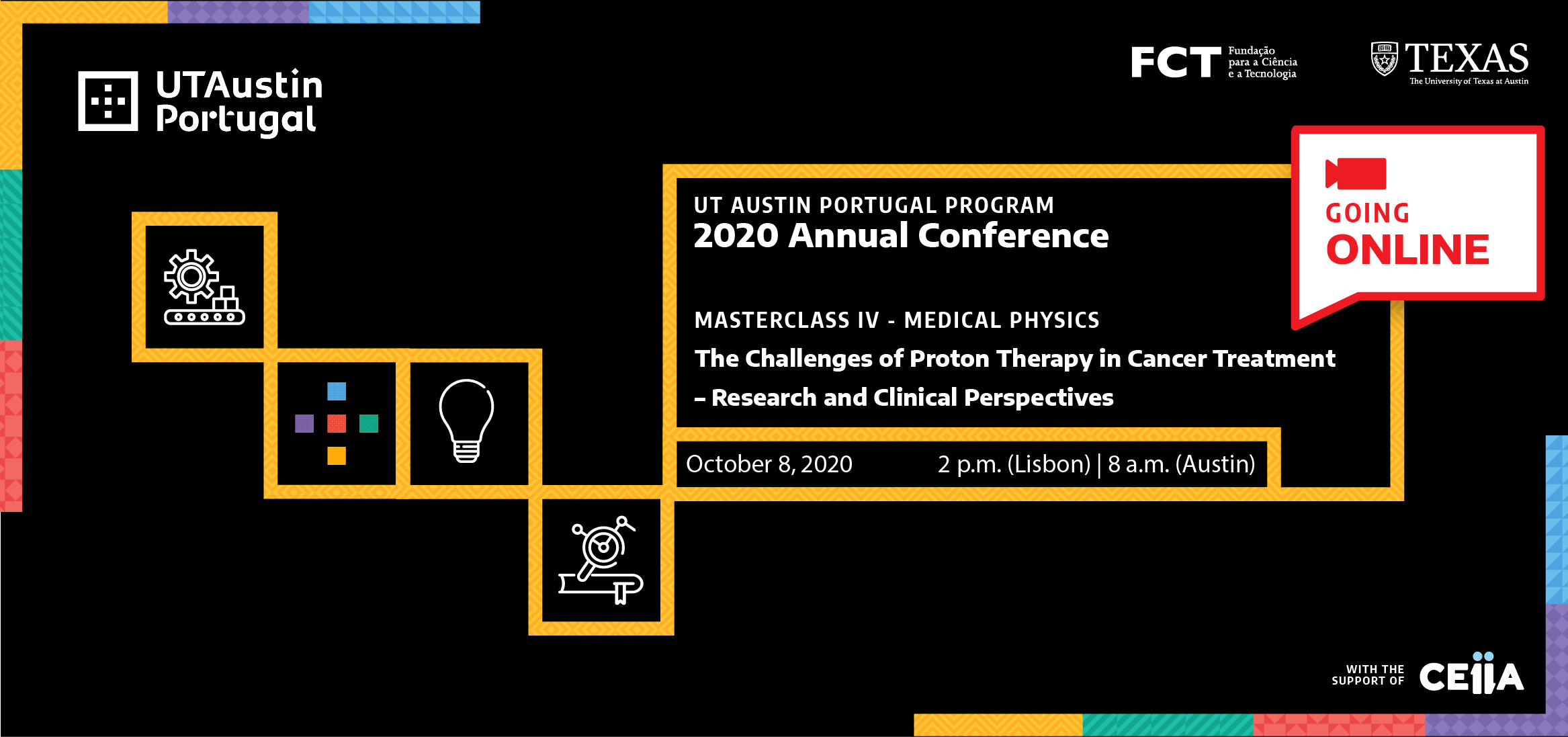
Description
Proton therapy is the most advanced form of radiation treatment that uses protons instead of X-rays, allowing a more tailored, patient-centered approach to cancer treatment. This innovative form of treatment calls for leading experts across all disciplines, from upstream to downstream sectors, working in close collaboration. Bridging the research with the clinical setting is fundamental to translate important research discovery into advanced science-based treatments and clinical care, and to feed the clinical outcomes of proton therapy into further research. However, this translation entails important challenges to be addressed by both sides in order to fully exploit the benefits of this therapy.
The Masterclass brought together a panel of notable speakers from the research and clinical fields in Portugal and in Texas for a comprehensive analysis of the challenges of proton therapy in the era of precision medicine.
Registration
Registration is now closed.
Speakers
- João Seco, Professor and Department Head of Biomedical Physics in Radiation Oncology at DKFZ (German Cancer Research Center), Germany
- Radhe Mohan, Professor and Medical Physicist at MD Anderson Cancer Center, USA
- Tiago Madaleno, Medical Physicist at IPO Lisboa, Portugal
- Cátia Pedro, Radiation Oncologist at IPO Lisboa, Portugal
Scientific Coordination
- João Oliveira, President of the Board of Directors of IPO Lisboa, Portugal
- José Marques, Vice-President of Tecnológico e Nuclear Campus at Técnico Lisboa, Portugal
Program
October 8, 2020
2 p.m. (Lisbon time) | 8 a.m. (Austin time) Welcome Message by José Marques, Program’s Area Director of Medical Physics in Portugal
2.10 p.m. | 8.10 a.m “Physics Challenges of Proton Therapy” by João Seco + Moderated Q&A
2.50 p.m. | 8.50 a.m “Medical Challenges and Opportunities of Proton Therapy”
by Radhe Mohan + Moderated Q&A
3.30 p.m. | 9.30 a.m Short Break
3.45 p.m. | 9.45 a.m _“Understanding Uncertainties in Proton Therapy_”
by Tiago Madaleno + Moderated Q&A
4.25 p.m. | 10.25 a.m “FLASH Proton Therapy” by Cátia Pedro + Moderated Q&A
5.05 p.m. | 11.05 a.m Session Wrap-up by José Marques, Program’s Area Director of Medical Physics in Portugal
Target Audience
Medical professionals, radiotherapy technologists, biomedical engineers, physicists, researchers and students from all involved disciplines, interested in taking part in a wider discussion about the scientific and clinical directions of proton therapy.
Photo Gallery
Check out the Photo Gallery of the UT Austin Portugal Program 2020 Annual Conference here!
E-Networking Corner
We wanted this Conference to also serve as an opportunity to reinforce networking and cooperation opportunities among our participants. For three months, we received and organised an online catalog of cooperation profiles of registered attendees at the Conference, wishing to find matches for potential collaborations among peers:
The cooperations profiles are no longer publicly available.
